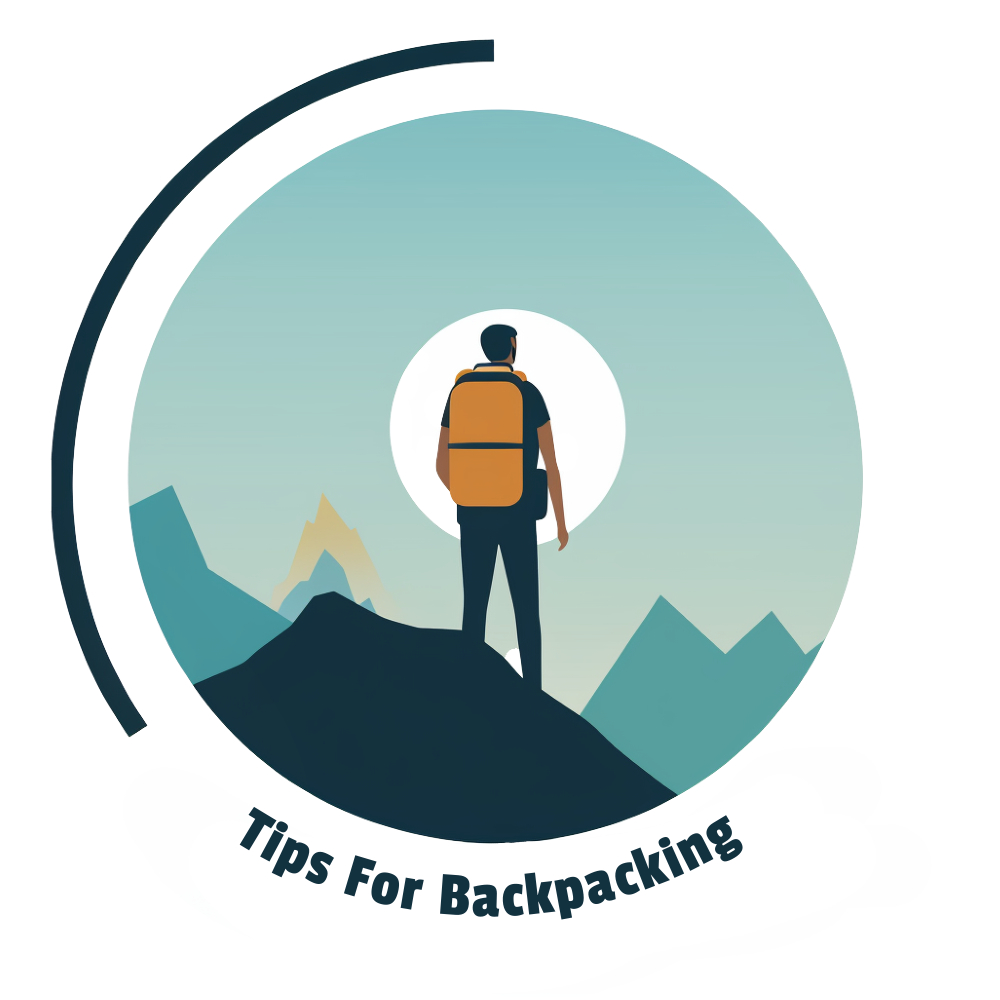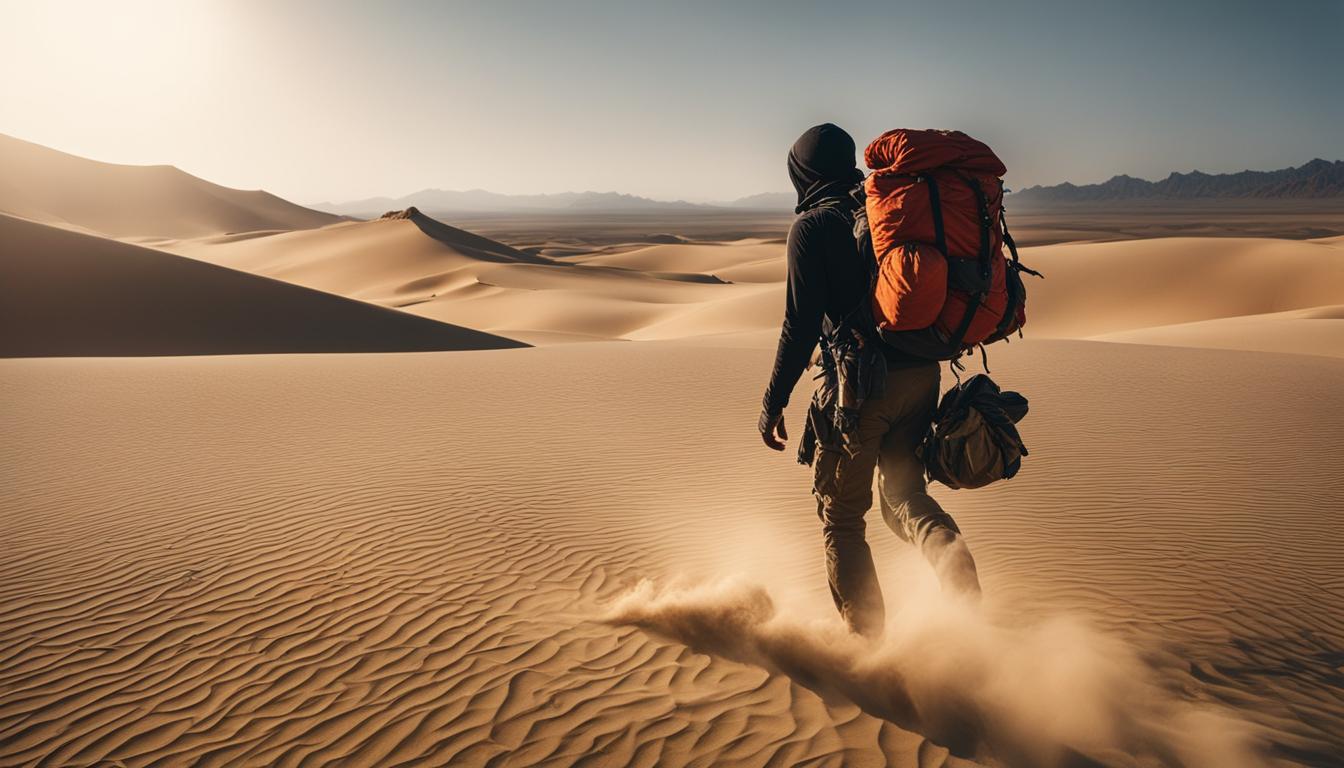When it comes to backpacking, extreme weather conditions can present unique challenges. Whether you’re facing scorching heat or freezing cold, proper preparation and precautions are essential for a safe and enjoyable adventure. In this article, I will share some valuable tips and insights on how to backpack in extreme temperatures and stay safe while braving the elements.
Key Takeaways:
- Choose a trail that offers shade or access to water when hiking in hot weather.
- Dress in light, breathable clothing and protect yourself from the sun.
- Stay hydrated and take breaks during the hottest parts of the day.
- In cold weather, layer your clothing and be prepared for changing conditions.
- Stay vigilant about signs of heat exhaustion or hypothermia and seek shelter or warmth when needed.
Planning Tips for Hot-Weather Hiking

When it comes to backpacking in extreme heat, proper planning is essential for a safe and enjoyable experience. Here are some tips to help you plan a successful hike in hot weather:
1. Avoid the hottest time of day
Hiking during the peak heat, typically from noon to 3 p.m., can be physically demanding and increase the risk of heat-related illnesses. Instead, consider starting your hike early in the morning or later in the afternoon when temperatures are cooler.
2. Choose shaded trails or near water sources
Look for trails that offer shade or access to water to provide relief from the heat. This can help you stay cooler and more comfortable throughout your hike.
3. Acclimate gradually
If you’re not accustomed to high temperatures, it’s important to acclimate gradually. Start with shorter hikes and gradually increase the duration and intensity to allow your body to adjust to the heat.
4. Plan breaks in shaded areas or near water
Plan your route so that you have opportunities to take breaks in shaded areas or near water sources. This will give you a chance to rest, cool down, and rehydrate.
Remember: it’s crucial to stay hydrated and protect yourself from the sun’s harmful rays. Be sure to carry plenty of water, wear sunscreen, a wide-brimmed hat, and sunglasses.
By following these planning tips, you’ll be better prepared to tackle hot-weather hiking and ensure a safe and enjoyable outdoor adventure.
| Signs of Heat-Related Illnesses | Prevention | Treatment |
|---|---|---|
| Sunburn | Apply sunscreen, wear protective clothing | Cool compresses, pain relievers |
| Dehydration | Drink plenty of water, electrolyte drinks | Rest, rehydrate, seek medical attention if severe |
| Heat cramps | Drink electrolyte drinks, stretch, rest | Massage affected muscles, rest, rehydrate |
| Heat exhaustion | Stay hydrated, rest in a cool place, loosen clothing | Move to a cool place, rehydrate, seek medical attention |
| Heat stroke | Seek shade, cool down with cold water, call emergency services | Emergency medical treatment |
Clothing and Gear Tips for Hot-Weather Hiking
When it comes to hiking in extreme heat, having the right clothing and gear is essential for staying cool and comfortable. Here are some tips to help you dress appropriately and make the most of your hot-weather adventure:
Choose the Right Clothing
Opt for light-colored and lightweight clothing made from moisture-wicking materials like nylon or polyester. These fabrics help regulate your body temperature and keep you dry by pulling sweat away from your skin. Loose-fitting and breathable clothing also promote airflow and prevent chafing.
Protect Yourself from the Sun
Don’t forget to shield yourself from the sun’s harmful rays. Wear a wide-brimmed hat, sunglasses, and clothing with an Ultraviolet Protection Factor (UPF) rating to provide added sun protection. Look for clothing with vents or openings to improve airflow and keep you cool during your hike.
Stay Hydrated and Comfortable
Carry a hydration pack or water bottle to stay hydrated throughout your hike. Consider using a squirt bottle or misting device to cool yourself down. It’s also important to wear appropriate socks made from wool or synthetic materials to wick away moisture and prevent blisters. Choose footwear with good ventilation to keep your feet cool and comfortable, and pack a lightweight and breathable rain shell in case of sudden weather changes.
Accessorize for Extra Cooling
Accessorize with items like a bandana or neck gaiter to keep cool on the trail. Soak them in water and wear them around your neck or head for instant relief from the heat. These simple accessories can make a big difference in your comfort level while hiking in hot weather.
By following these clothing and gear tips, you can stay cool and enjoy your hot-weather hiking adventure to the fullest. Remember to always prioritize your safety and well-being by staying hydrated, protecting yourself from the sun, and being prepared for any weather conditions that may arise.
What are the Best Tips for Backpacking in Extreme Temperature Conditions?
When it comes to backpacking safety tips for weather, it’s crucial to pack appropriate clothing and gear for extreme temperatures. Layering is key to staying warm in cold conditions, while a good sun hat and sunscreen are essential for extreme heat. Always check the forecast and be prepared for any weather scenario.
FAQ
What should I consider when planning a hike in hot weather?
When planning a hike in hot weather, choose a trail that offers shade or access to water to stay cool and comfortable. It’s also important to dress in light, breathable clothing, stay hydrated, and protect yourself from the sun.
What type of clothing should I wear when hiking in hot weather?
Dress in light, breathable clothing, such as light-colored shirts and pants made from nylon or polyester, to reflect the sun’s rays and promote airflow. This will help keep you cool during your hike.
How can I stay hydrated while hiking in hot weather?
Carry a hydration pack or water bottle, and drink frequently to prevent dehydration. It’s important to replenish fluids regularly, especially in hot weather.
What precautions should I take to protect myself from the sun while hiking in hot weather?
To protect yourself from the sun, wear sunscreen, a wide-brimmed hat, and sunglasses. These will help shield your skin and eyes from harmful UV rays.
What time of day is best for hiking in hot weather?
Take breaks during the hottest parts of the day and hike during cooler times, like early morning or late afternoon. This will help you avoid the peak heat and stay more comfortable.
How should I dress for cold weather hiking?
In cold weather, layer your clothing to stay warm and protect yourself from windchill. It’s important to have extra layers, a rain shell, and a hat and gloves to stay comfortable.
How can I cool down on hot days while hiking?
Use snow to cool down on hot days by rubbing it on your pulse points or having a snowball fight. This can provide temporary relief from the heat.
How should I prepare for changing weather conditions while hiking?
Be prepared for changing weather conditions and pack extra layers, a rain shell, and a hat and gloves. It’s important to have the right gear to keep you comfortable in different weather situations.
What should I do if I start feeling the effects of heat exhaustion or hypothermia?
Stay vigilant about signs of heat exhaustion or hypothermia and seek shelter or warmth when needed. It’s important to take these symptoms seriously and take immediate action to prevent further complications.
When is the best time to hike in hot weather?
Avoid hiking during the hottest time of day, typically noon to 3 p.m., and consider starting early in the morning or hiking later in the afternoon to avoid the peak heat. This will make your hike more enjoyable and safer.
How can I acclimate to high heat gradually while hiking?
Acclimate to the high heat gradually by taking shorter hikes at first and gradually increasing the duration and intensity. This will allow your body to adjust to the higher temperatures and reduce the risk of heat-related illnesses.
How can I stay cool while hiking in hot weather?
Plan your route to include breaks in shaded areas or near water sources to rest and cool down. This will help you stay cool and refreshed during your hike in hot weather.
What are the signs of heat-related illnesses, and how can I prevent and treat them?
Understand the signs of heat-related illnesses, such as sunburn, dehydration, heat cramps, heat exhaustion, and heat stroke, and know how to prevent and treat them. It’s important to take precautions and seek medical attention if necessary.
What type of clothing should I wear while hiking in hot weather?
Choose light-colored and lightweight clothing made from moisture-wicking materials, such as nylon or polyester, to help regulate body temperature and keep you dry. It’s also important to wear loose-fitting and breathable clothing to promote airflow and prevent chafing.
How can I protect myself from the sun while hiking in hot weather?
Protect yourself from the sun by wearing a wide-brimmed hat, sunglasses, and clothing with UPF (Ultraviolet Protection Factor) rating. This will provide additional protection against harmful UV rays.
How can I stay hydrated while hiking in hot weather?
Carry a hydration pack or water bottle to stay hydrated and consider using a squirt bottle or misting device for extra cooling. It’s important to drink plenty of fluids to prevent dehydration.
What type of socks and footwear should I wear while hiking in hot weather?
Wear appropriate socks made from wool or synthetic materials to wick away moisture and prevent blisters. Choose footwear with good ventilation to keep your feet cool and comfortable during your hike.
What should I pack for sudden weather changes while hiking?
Pack a lightweight and breathable rain shell in case of sudden weather changes. This will help protect you from rain and wind while allowing proper airflow.
How can I keep cool while hiking in hot weather?
Use accessories like a bandana or neck gaiter to keep cool by soaking them in water and wearing them around your neck or head. This will provide additional relief from the heat.

